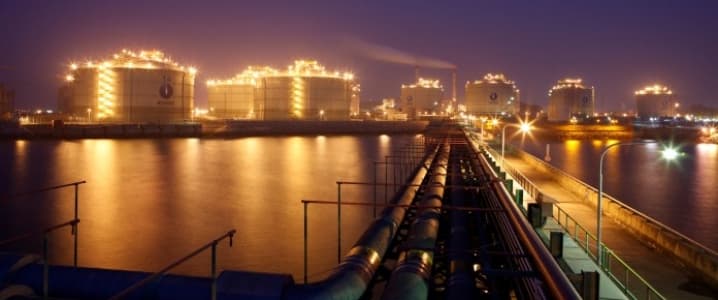Global oversupply in liquefied natural gas has emboldened buyers to push for more favorable contracts.
Korea Gas Corp. (KOGAS), Japan’s JERA and China National Offshore Oil Corp. (CNOOC), which collectively represent about one-third of the world’s LNG purchases, have formed a group to exchange information and “cooperate in the joint procurement of LNG,” according to a report from Reuters.
High LNG prices before 2014 left many Asian importers in a painful position and prompted several joint LNG-buying deals, but nothing on this scale has been attempted before. Under the terms of the agreement, the buyers aim to extract concessions from producers that would give them supply flexibility, such as having the right to re-sell imports to third parties, something they are currently unable to do under so-called destination restrictions.
“We have created a platform to share, discuss and solve our common issues such as traditional LNG business practices, including destination restrictions,” said JERA spokesman Atsuo Sawaki.
Destination restrictions have made it impossible for LNG buyers to sell excess supplies, which they buy in fixed volumes as part of their long-term contracts. Because of this, buyers like KOGAS, JERA and CNOOC will be struggling with excess supplies in the next few years. Related: Fruitless OPEC Meeting Sees Oil Prices Edge Lower
From a practical standpoint, the three members of the buyers’ club may be looking for a way to trade with each other:
- KOGAS buys supplies for winter;
- CNOOC buys for summer;
- JERA buys across both seasons.
This means the partners could potentially trade LNG to one another depending on demand within the group.
Producers need to stay competitive
Altering existing contracts could prove detrimental to producers.
Qatar, which will see many mid-term deals with Japan start to expire around 2023, will be especially vulnerable to contract negotiations with less favorable terms for the producer.
The spike in LNG capacity in recent years has sent available LNG to 300 million tons a year while only 268 million tons were traded in 2016, according to Reuters. This oversupply also means importers have more options to choose from, putting more pressure on producers like Royal Dutch Shell (ticker: RDSA), Chevron (ticker: CVX), ExxonMobil (ticker: XOM) and Woodside Petroleum (ticker: WPL) to provide more attractive contracts.
ICE to offer first U.S. Gulf Coast LNG futures contract
The big spike in natural gas production in the United States in particular means that many companies will begin exporting LNG from the Gulf Coast, with numerous export facilities in permitting and development or under construction, following Cheniere Energy’s (ticker: LNG) lead. With the U.S. becoming a net exporter for the first time in 60 years, Intercontinental Exchange Inc. (ICE) said Wednesday that it will begin trading a first-ever U.S. LNG futures contract in May. Related: Pro-Extension Voices In OPEC Become Louder
ICE said the contracts will be cash-settled against the Platts LNG Gulf Coast Marker (GCM) price assessment and use Platts-derived U.S. GCM LNG forward curves for daily settlement purposes. The curves will have an initial tenor of 48 months.
“Domestic and international market participants now have a risk management solution that lays the foundation for a more effective means of hedging their spot and forward exposure,” said J.C. Kneale, vice president, North American power and natural gas markets at ICE, in a statement.
ADVERTISEMENT
“We believe the U.S. Gulf Coast is poised to become a key anchor for LNG prices,” said Shelley Kerr, global director of LNG and regional director of generating fuels & electric power, Europe, Middle East and Africa (EMEA) at S&P Global Platts.
She said growth in Asia-based LNG swaps has already been strong, and now “counterparties are demanding that the new flexible supply from the U.S. is underpinned by both price transparency and the means to hedge.”
By Oil & Gas 360
More Top Reads From Oilprice.com:
- Is The End Of The Escondida Strike A ''Disaster'' For This Mega-Mine?
- Shell’s New Permian Play Profitable At $20 A Barrel
- Why Are Shell And Toyota Backing Hydrogen Fuel Cell Vehicles?


















